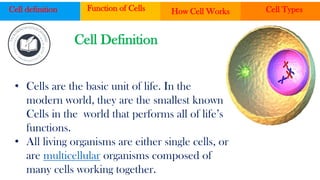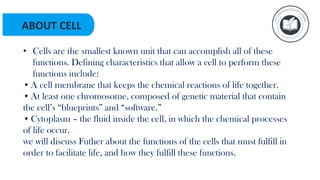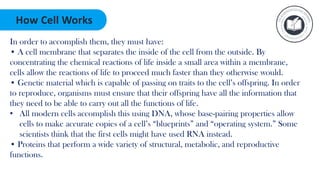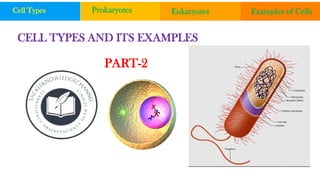Cells are the basic unit of life that perform all life functions. There are two major cell types: prokaryotic and eukaryotic cells. Prokaryotic cells like bacteria are simpler and lack internal membranes, while eukaryotic cells like plant and animal cells have internal membranes and organelles. Eukaryotic cells allow for multicellular organisms through cell specialization.




























